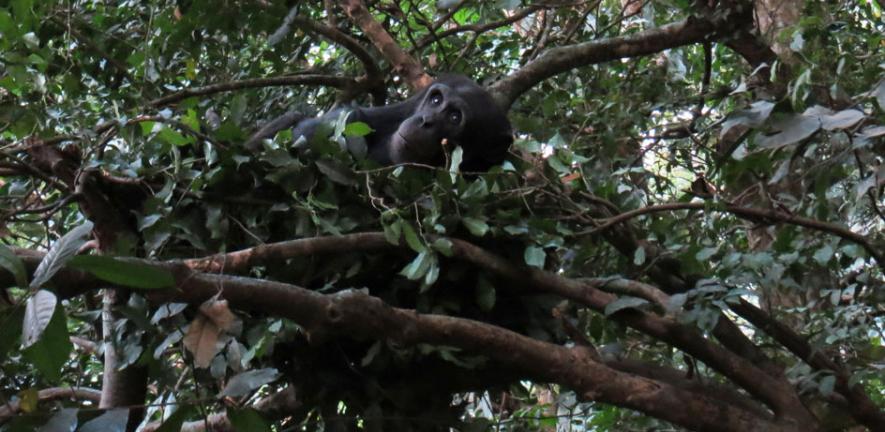
Chimpanzee behaviour suggests tree-to-ground transition occurred before the emergence of ancient humans.
Chimpanzee behaviour suggests tree-to-ground transition occurred before the emergence of ancient humans.
It has long been believed that coming down from the trees was a crucial evolutionary shift. The behaviour of these chimpanzees suggests a more deep-seated, gradual transition.
Kathelijne Koops
The first study into rarely-documented ground nest-building by wild chimpanzees has offered new clues about the ancient transition of early hominins – our “human-like” ancestors - from sleeping in trees to sleeping on the ground.
While most apes build nests in trees, the study, published in the American Journal of Physical Anthropology, focused on a group of wild, West African chimpanzees, that often show ground-nesting behaviour. It suggests that sleeping on the ground, once thought to have been a key part of the evolutionary shift among the early ancestors of modern humans, was actually a more gradual process.
An international team of primatologists from the University of Cambridge and Kyoto University, led by Dr Kathelijne Koops, studied the chimpanzee (Pan troglodytes verus) population in the Nimba Mountains in Guinea, West Africa.
All species of great ape build nests to sleep in each night. Construction of these shelters takes minutes as the apes bend, break and interweave branches into a circular frame, then tuck in smaller branches to form a sturdy but comfortable sleeping platform.
“We believe that, like modern apes, the common ancestor of chimpanzees and humans also slept in the trees six million years ago,” Koops said. “However, these nests are not preserved in the fossil or archaeological record, so it is impossible to study directly the ancient transition from sleeping in trees to building shelters on the ground. Recording this rare behaviour in the chimpanzee, our closest relative, may provide vital clues.”
As the Nimba chimpanzees do not yet tolerate human presence at close range, the team used new molecular genetic techniques to analyse hairs collected from the nests. This allowed the team to establish the sex of chimpanzees displaying the behaviour and to identify individuals in the group.
The team showed that as chimpanzees sleep both on the ground and in the trees, the transition from trees to the ground did not require a special evolutionary adaptation. This suggests that early hominins may have slept on the ground before the emergence of Homo erectus (“upright man”), the first species which was fully adapted to living on the ground.
“This is intriguing as it has long been believed that coming down from the trees was a crucial evolutionary shift,” Koops said. “The behaviour of these chimpanzees suggests a more deep-seated, gradual transition from tree to ground sleep.”
Other theories for the transition have included the use of fire and the scarcity of trees in open habitats. The new research demonstrates that neither is a prerequisite for ground sleeping, however. The chimpanzees in question live in a plentiful, evergreen forest and, of course, do not create fire.
“These chimpanzees offer a rare opportunity to investigate why a population of wild apes chooses to sleep on the ground,” concluded Koops. “We showed that ground-nesting was not caused by male mate-guarding behaviour, a lack of trees in which to nest, or because of fire. This suggests that our direct ancestors were neither the only, nor the first, species to come down from the trees.”
This work is licensed under a Creative Commons Licence. If you use this content on your site please link back to this page.





